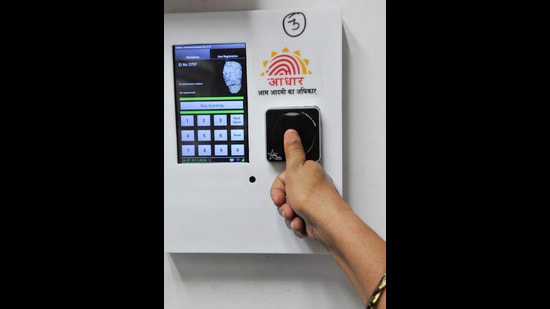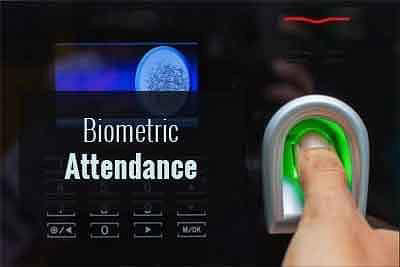NMC Reiterates Aadhaar-Enabled Biometric Attendance System For Medical Colleges

NMC Reiterates Aadhaar-Enabled Biometric Attendance System For Medical Colleges
The National Medical Commission (NMC) has taken measures to address concerns related to “ghost faculty” in medical colleges, emphasizing the implementation of an Aadhaar-enabled biometric attendance system (AEBAS). This move is aimed at ensuring transparency and accountability in the attendance tracking of faculty members during inspections.
The term “ghost faculty” typically refers to instances where individuals are on the payroll as faculty members but may not actively participate in teaching or may not even exist. Such instances can have adverse effects on the quality of education and the credibility of medical institutions.

The Aadhaar-enabled biometric attendance system involves the use of Aadhaar, a unique identification number issued to Indian residents, for tracking attendance. Biometric data, such as fingerprints or iris scans linked to Aadhaar, is used to verify the identity of individuals. This technology helps in preventing proxy attendance and ensures that the person physically present is the one officially recorded.
By reiterating the importance of AEBAS for faculty attendance, the NMC aims to enhance the accuracy and reliability of attendance records, making it more difficult for institutions to manipulate or falsify faculty attendance during inspections. This step aligns with broader efforts to improve the overall quality and accountability of medical education in India.
Implementing robust attendance tracking systems, especially ones leveraging biometric technology, can contribute to creating a more transparent and accountable environment in educational institutions. It also reflects a commitment to rooting out malpractices and ensuring that faculty members actively engage in their roles, ultimately benefiting the quality of medical education in the country.
The National Medical Commission (NMC) has taken steps to standardize and enhance the application process for starting new medical colleges or increasing seats in existing institutions. As part of these efforts, the Medical Assessment and Rating Board guidelines have been introduced to address various aspects, including the issue of “ghost faculty.” These guidelines are set to come into effect from the next academic year, according to the regulatory body.
To combat the challenge of ghost faculty, the guidelines emphasize the implementation of an Aadhaar-enabled biometric attendance system (AEBAS). The system is expected to track the daily attendance of required staff, including faculty, residents, and supporting staff. The guidelines recommend that this information, preferably including face-linked recognition, be made available to the NMC. Additionally, the daily attendance data should be accessible on the medical college website in the form of a daily attendance dashboard.
The integration of technology, such as biometric attendance systems linked to unique identification like Aadhaar, is aimed at ensuring the accuracy and transparency of attendance records. By making this information readily available to the NMC and on the institution’s website, there is a heightened level of scrutiny and accountability, which is crucial for maintaining the integrity of medical education.
These guidelines reflect a comprehensive approach by the NMC to address multiple challenges in the medical education sector, ranging from the application process for new institutions to tackling issues like ghost faculty. The emphasis on transparency and accountability aligns with the broader goal of maintaining high standards in medical education across the country.
The National Medical Commission (NMC) has introduced a Standard Operating Procedure (SOP) to be implemented immediately by the Post Graduate Medical Education Board. This SOP is designed for the purpose of evaluating the examination process as part of the inspection for recognition, recognition against increased intake, or renewal of recognition for a course or qualification.
The notice issued along with the guidelines indicates that the SOP is intended to streamline and standardize the assessment of the examination procedures in medical education institutions. This includes evaluating processes related to recognition, increased intake, and renewal of recognition, ensuring that they meet the required standards set by the NMC.
By implementing a standardized operating procedure, the NMC aims to bring consistency and transparency to the evaluation process. This is critical for maintaining the quality and integrity of postgraduate medical education across institutions. The immediate effect of the SOP suggests a proactive approach by the regulatory body to address and enhance the assessment procedures promptly.
Standard operating procedures play a crucial role in regulatory frameworks, helping ensure that evaluations are conducted uniformly, adhering to established guidelines and criteria. In the context of medical education, such procedures contribute to maintaining high standards, fostering accountability, and addressing potential issues in a systematic manner.
The National Medical Commission (NMC) has outlined new guidelines for the examination process in medical colleges and institutes. According to the guidelines mentioned in the Post Graduate Medical Education Regulations (PGMER), institutions will conduct examinations following the specified guidelines and maintain a video record of the entire examination process, along with relevant data such as details of examiners, examination procedures, information about cases used in the examination, and the theses of the students.
The notable shift in the approach is the absence of physical or online inspections of the examination process itself. Instead, medical colleges and institutes are now directed to conduct examinations according to the prescribed schedule. The decision to keep a video record and maintain comprehensive data about the examination aims to ensure transparency, accountability, and adherence to the established guidelines.
After the examinations are concluded, physical assessments of the medical colleges and institutes will be carried out. These assessments will cover various aspects such as infrastructure, clinical material, investigative material, and other facilities related to the examination process. This approach allows for a more holistic evaluation of the institution, combining the scrutiny of the examination process with a later physical assessment.
The updated procedures, as outlined in the notice, signify a shift towards leveraging technology for monitoring and assessment in the context of medical education. This approach not only facilitates efficient evaluation but also aligns with the broader trend of incorporating digital solutions for improved transparency and accountability in educational processes.





